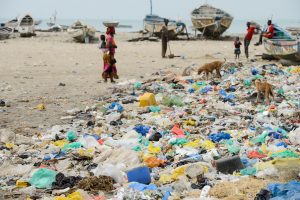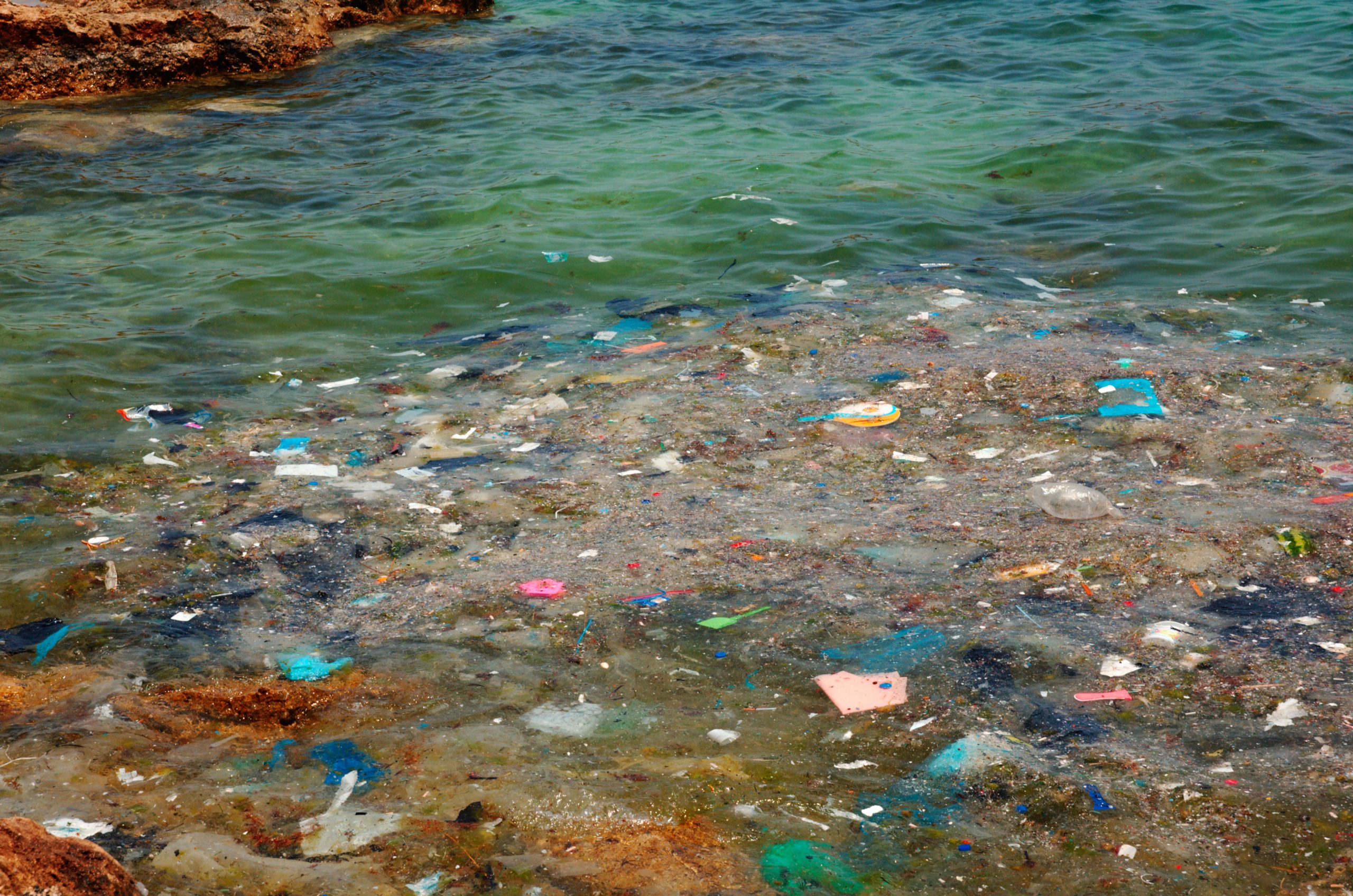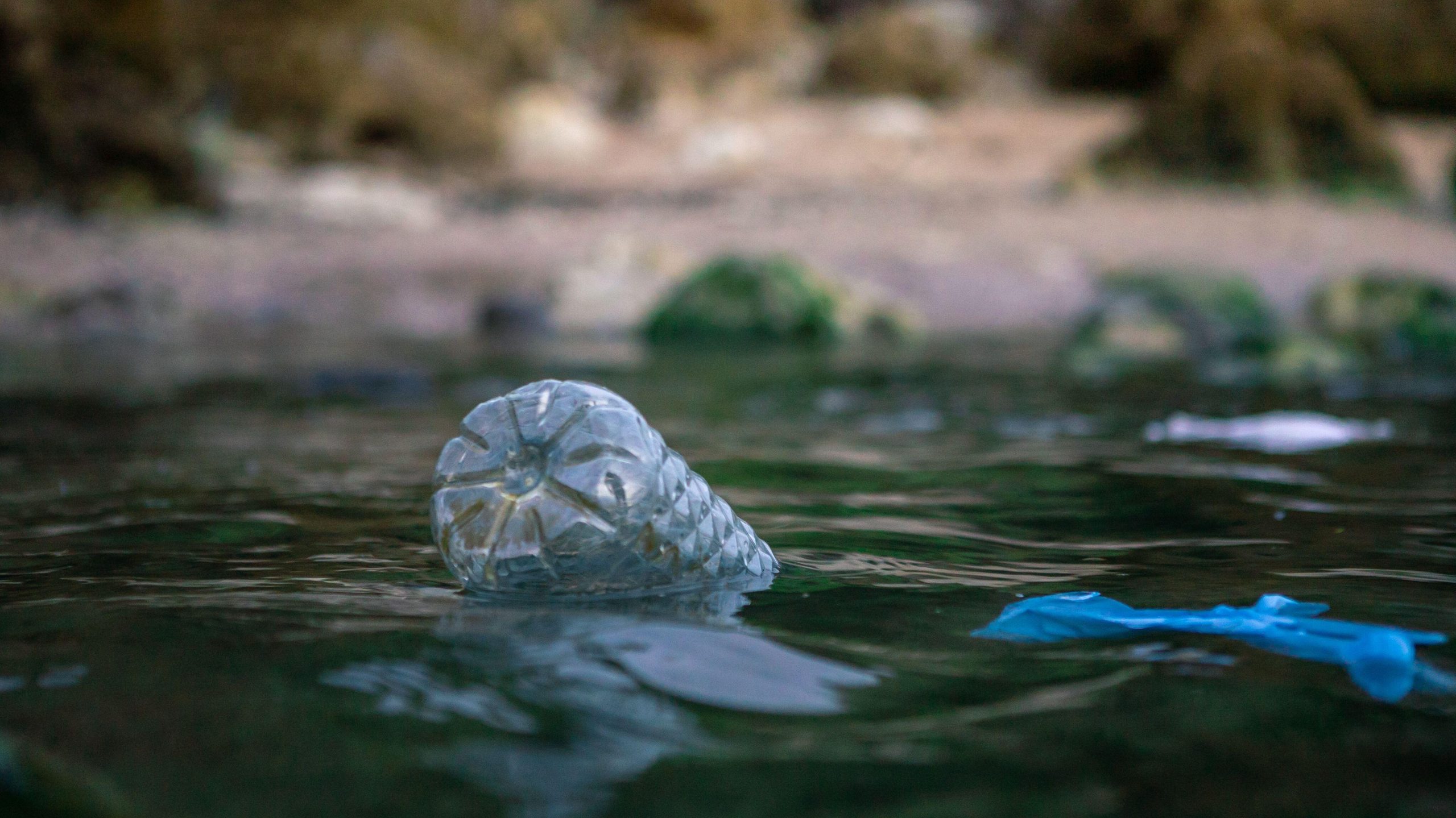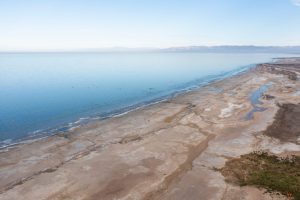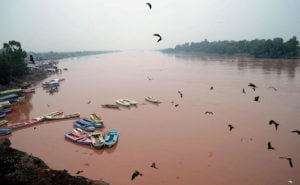Images of paradise beaches buried under bottles and ocean animals swimming past carrier bags are the all-too-familiar evidence of how humanity’s addiction to plastic has polluted the marine world.
But a less visible problem with plastic is increasingly capturing scientists’ attention: the microbes that have colonised the millions of tonnes and trillions of pieces of it in the ocean. These organisms are emerging as a real threat to animals, and that may include humans.
China Dialogue Ocean spoke to Dick Vethaak, a retired professor of ecotoxicology (the study of how toxins affect organisms and ecosystems) and water quality: “We have introduced a completely new niche of substrates, used as a homeland for distinct microorganism communities. I refer to this as a plastic time bomb – the ground for the next pandemic.”
He is not the only person with such concerns.
Every corner of the ocean
Plastics are everywhere humans have looked in the marine environment, from microscopic fragments encased in Arctic ice, to bags drifting on the deepest ocean floors.
Most of this enters the ocean from land, with rivers believed to be the primary source of contamination. Once it enters the water, wind and waves break and shape it as sunlight degrades it, often transforming waste items into smaller and smaller fragments.
Legally binding rules designed to end this pollution are being drawn up under the auspices of the United Nations. To date, progress has been difficult, and the outcome is still uncertain.
Adding to the problem, there are suggestions that the fossil fuel industry could pivot from energy to plastic production.
“The industry sees plastics as their plan B: if they can’t use fossil fuels as an energy source, then they will use it for plastic products,” says Bethanie Carney Almroth, a professor of ecotoxicology and environmental science at the University of Gothenburg, Sweden.
Carney Almroth, who is involved in the UN plastic treaty negotiations, is concerned by this concerted push for increasing plastics production: “We have too much plastic: the planet and human societies cannot tolerate more.”
Almroth tells China Dialogue Ocean that microorganisms thriving on plastics are the latest addition to the list of dangers posed by marine plastic.
Enter the plastisphere
The seas are home to a huge variety of microorganisms. Scientists working on a study of Pacific Ocean coral reefs which concluded last year, were so surprised by the number they found that they suggested revising estimates of Earth’s microbial diversity upwards.
Wood, metal and any other material adrift at sea is rapidly colonised. As plastic has become ubiquitous in the ocean, our discarded waste has become a new type of home for life.
In 2013, the marine microbiologist Linda Amaral-Zettler and her colleagues coined the term “plastisphere” to describe the layers of organisms they found on plastic samples from the North Atlantic Subtropical Gyre (a part of one of Earth’s five major circulating ocean currents, which coalesce floating plastic into rubbish patches). Their study said the communities of microbes living on plastic debris were different from those in nearby water, “implying that plastic serves as a novel ecological habitat in the open ocean”.
Plastics endure, meaning microbial communities that build up on them can travel long distances, potentially bringing species far beyond their normal geographical range. They may also degrade into tiny pieces, which accumulate in animals, including those intended for human consumption.
Hitchhikers’ health impacts
Plastispheres are now a major global environmental concern.
One team of researchers has been studying how layers of microorganisms called biofilms develop on plastics in the Mediterranean and North Atlantic oceans, through a project called MicroplastiX. One of the project’s marine ecologists, Raffaella Casotti, told China Dialogue Ocean that “in the Gulf of Naples, a densely urbanised area, a wide variety of algae, invertebrates, and fungi grows on all microplastics sampled.”
Though most of the microorganisms that have been detected in the Mediterranean plastisphere are harmless, the researchers also found Vibrio bacteria in higher concentrations on plastic than in the surrounding waters. Some types of bacteria of the Vibrio genus are known to cause disease in shellfish – and the humans who eat them.
Casotti’s team fed sea urchins with either pristine or biofilm-laden plastic. Those fed the colonised plastic displayed a significantly stronger immune response. “The presence of a plastisphere doesn’t kill them, but leads to the immune system’s reaction,” explains Casotti. “Our hypothesis is that the microorganism on plastic might affect the sea urchin’s reproduction.”
In both laboratory-based and wild studies, scientists have found that colonised microplastics affect multitudes of species. The problems they cause range from impaired feeding, reproduction and fitness in corals and bivalves, to disease in aquaculture facilities.
Up the chain
Microplastics are not just found in the small filter feeders, such as oysters, that consume them directly in shallow waters.
“We found microplastics present in surface, mid-water and deep-sea species like clams, yellowfin tuna and vampire squid,” says Anne Justino, a researcher at the Federal Rural University of Pernambucoian in Brazil. Her work reveals that microplastic transfer into oceanic predators occurs when they eat contaminated prey, rather than through directly ingesting debris.
Justino’s team, which is also involved in the MicroplastiX project, is now working with fishery industries to assess the level of microplastic contamination in fish muscles – the main part eaten by humans.
Currently, researchers do not have a clear picture of how humans are exposed to plastics and what the consequences of any exposure might be.
One process that has been shown to remove some accumulated microplastics in seafood and thus reduce the potential for human health impacts is called depuration. This is where animals are placed in clean, flowing water to try and purge contaminants from their digestive systems.
But there are suggestions that oceanic plastispheres might still generate health problems for humans.
Karen Shapiro, a waterborne zoonoses specialist at the UC Davis Veterinary Medicine academic centre in California, USA, has shown how microscopic parasites like Toxoplasma gondii can quickly form colonies on floating plastic debris. This parasite is known to live inside shellfish, which then infect humans who eat them raw. Preliminary studies from Shapiro’s group and others show that Toxoplasma gondii can survive on plastic debris for several months.
Shapiro postulates that the plastisphere is bringing pathogens to areas where they would not otherwise be. She is cautious about drawing conclusions, however: “We know that plastispheres make their ways in our bodies, but we still don’t understand what they do to us. We lack clear papers directly correlating consumption of colonised microplastics and health effects for people.”
Superbugs thriving on plastic
Studies have found that plastispheres constitute happy islands for superbugs.
The use of antibiotics on fish farms can promote the flourishing of resistant bacteria in marine environments; such antibiotic-immune organisms might then flow into oceans via wastewater-treatment plants.
In 2021, researchers at the New Jersey Institute of Technology in Newark reported that microplastics from shellfish host bacteria resistant to antibiotics, and that these superbugs could survive longer on microplastics than when free-floating. South Korean researchers also found abundant antimicrobial genes when analysing microbial communities living on plastic in the North Pacific Gyre.
But finding a direct correlation between the plastisphere and antibiotic-resistant infections in humans is incredibly difficult.
“The only way to definitively prove that the plastisphere contributes to disease outbreak,” says Vethaak, “is to assess the risk for human health from plastic-associated pathogens in populations suffering from occurring epidemics and living closer to highly polluted areas.”
He strongly believes that “plastic debris might serve as a vector for the spreading of diseases and antibiotic-resistant microorganisms in disaster areas [such as war zones and regions hit by extreme weather] with documented high levels of plastic”.
The high cost of cheap plastic
Plastic pollution has been seen in every part of the ocean and detected in every marine creature where it has been sought.
As researchers struggle to understand the true risk of the plastisphere, one thing is clear: eliminating any risk requires a coordinated global effort to end plastic pollution. This would ensure these new plastic-based ecosystems are not with us forever, that the ocean depths are not home to plastic bags, and that beaches are one day free of discarded bottles – and the microbes they carry.
Casotti fears she may one day find a really worrying human pathogen in her plastic samples.
“If the price of each water bottle reflected its real impact on our health, then it would cost the consumer at least 100 euros,” she says.
“And you would think twice before throwing it.”
